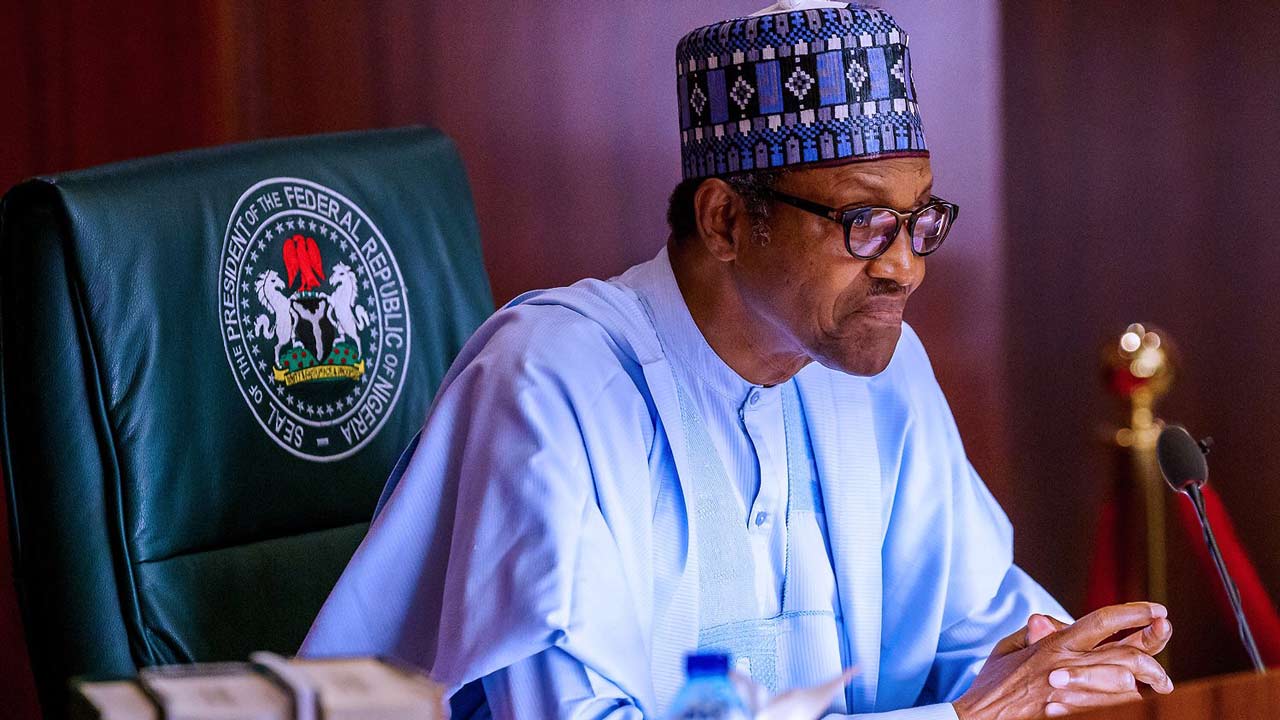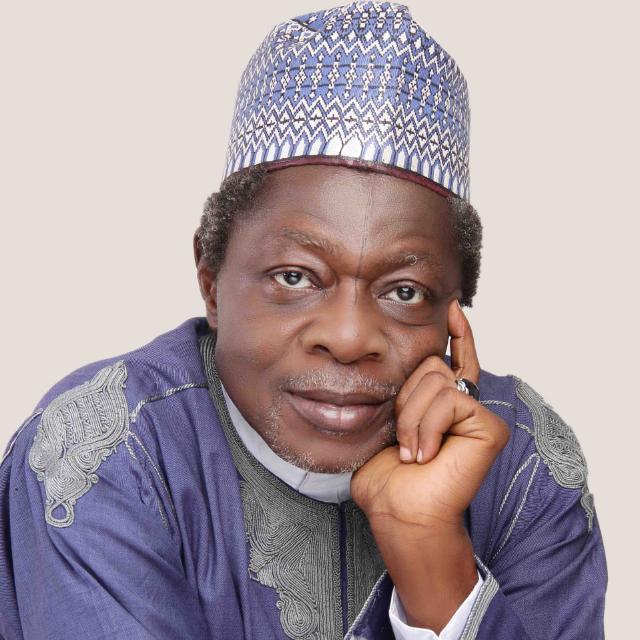What We Told President Buhari:Reflections on the work of the Presidential Economic Advisory Council By Muhammad Sagagi
Fixing the Nigerian economy was arguably PMB’s toughest challenge. The Buhari economic years witnessed double-dip recession, with unprecedented number of unemployed people and widespread poverty. Nigeria’s fiscal position became more uncertain, disruptive, and precarious.
All Federal Government Budgets from 2016 were presented with huge deficits – most often in excess of 2% of GDP – which paradoxically increased PMB’s appetite for more loans.
The 2015-2016 recession, Nigeria’s first in 2 decades, provided the first opportunity for the Buhari administration to institute reforms that would place the country on sustainable growth path. The administration’s feeble response to the crisis, The Economic Recovery and Growth Plan (ERGP), missed the growth and recovery projections for all four years, including its forecast of up to 5.1 million new jobs and a decline of the unemployment rate to 11.23 % by the end of 2020. The slow pace of reforms and consequent weak growth led to the downgrade of Nigeria’s sovereign rating by international agencies, further undermining confidence in the economy.
PMB disbanded his Economic Management Team (EMT), led by his Vice President, seemingly on account of its failure to deliver on the government’s commitment to re-build and restore the economy to a path of sustainable and inclusive growth. In its place, the Presidential Economic Advisory Council (PEAC or Council) was constituted to advise Mr. President on economic policy matters, ‘with emphasis on … government’s ambitions for sustainable job creation, inclusive economic growth, and prosperity for all’. However, elements of the EMT remained relevant and influential enough to determine the direction of PMB’s economic agenda and indeed, the fate of the many interventions designed, and the recommendations made by the PEAC to the President.
To deliver on its mandate, the PEAC carried out extensive immersion sessions with MDAs to better understand issues, challenges, and opportunities. In addition to the routine reviews of domestic and global policy developments, the PEAC conducted in depth reviews of the strategies and plans of the Federal Government to identify and report on areas of underperformance, effectiveness of mechanisms, systemic inefficiencies, and impact.
To improve its ability to impact the economy in a comprehensive and fundamental way, focus of the PEAC expanded beyond public sector economic policy. It engaged with the Organised Private Sector on the issues and challenges impacting on its performance.
Pursuant to its mandate, the PEAC provided creative, sometimes radical solutions for Mr. President to adopt and implement. The choice of interventions was dictated by the PEAC’s terms of reference and guided by the mood of the economy- not by what the President liked or disliked. Consequently, the PEAC’s interventions sought to strengthen institutions, block leakages, engender efficiency in service delivery, promote macroeconomic stability and generally support Mr. President’s team in accomplishing Nigeria’s economic development objectives. In general, the PEAC told Mr. President what Nigeria should be doing but was not; what Nigeria was doing but should do more or less of, and what Nigeria should not be doing at all. The PEAC, at all times, reminded Mr. President of the benefits of reforms and the risks of inaction.
In recent weeks and months, many Nigerians had sought to know what the PEAC told Mr. President. That is certainly a legitimate demand. From a long list of interventions and recommendations the PEAC submitted, I have selected, without the prior knowledge or consent of my colleagues, to highlight the following for the satisfaction of this demand. This is only a tip of the iceberg…. only time will unveil the full story of the PEAC.
First. following the immersion sessions with MDAs, the PEAC made far- reaching recommendations on institution-strengthening to engender efficiency in service delivery and improve the capability of the MDAs in policy design and implementation. A new coordination framework proposed the creation of a Policies and Programmes Co-ordination Office (PPCO)- to be embedded in the Office of the Chief of Staff to the President- whose primary mandate would be the promotion of synchronicity of actions between government institutions (MDAs) on the national development goals. Its goal was to ensure greater coherence and consistency in the implementation of economic policy. The PEAC was concerned that intra and inter-agency conflicts and coordination gaps had in the past rendered the delivery of several policy interventions inefficient and blunted their impact.
Second, a Poverty Reduction with Growth Strategy (the NPRGS) was uniquely designed to give teeth to Mr. President’s pledge to lift 100 million Nigerians out of poverty in 10 years. A job creation strategy sought to enhance marginalized youths’ access to economic opportunities by improving their vocational, entrepreneurial and life skills and helping them find productive employment. Creating economic opportunities for the economically marginalized demographics would represent significant implication for social cohesion and national security.
Third, reflecting on Nigeria’s fiscal challenges, the PEAC provided innovative and international best practice forms of financing development- including the establishment of The Nigeria Investment and Growth Fund (NIGF), a private equity style fund, approved in April 2021 as part of the National Poverty Reduction with Growth Strategy (NPRGS). This was a robust strategy to reduce dependence on debt for the financing of critical infrastructure, improve liquidity and generally evolve a more self-reliant financing strategy.
Fourth, the PEAC viewed the fiscal crisis as an opportunity to institute extensive PFM and governance reforms to improve fiscal efficiency, transparency, enhance value-for-money and ultimately create additional fiscal space. On this, it called for a reform of public contracting and procurement process; the decentralization of delivery structure of Social Investment Programmes; a more effective tracking of all State-Owned Enterprises (SOEs) operations generally and in particular the NNPC, CBN and NIMASA and a reform of the finances of State-Owned Enterprises to effectively bring them within the Federal Government’s overall fiscal framework.
Fifth, Council had its profound worries about the government’s ‘tax, borrow and spend’ strategy and its level of indebtedness and debt sustainability. It had called for a re-assessment of the projects in the Government’s Borrowing Plan with a view to stepping down all non-priority projects (such as a $500million loan for the digitalization of NTA) and devolving same to the private sector, promoting Public Private Partnerships in critical infrastructure funding, and identifying more innovative funding options- (such as Private sector-led non-debt financing of infrastructure).
Sixth, the PEAC appreciated Mr. President’s prompt response to the COVID-19 induced economic crisis and provided support to the Economic Sustainability Committee, Chaired by the Vice President, in designing the Economic Sustainability Plan (ESP), which provided a policy framework for the functioning of the economy amid Covid-19. However, Council cautioned Mr. President that the ESP’s 12-month timeframe was too short-term for impact and its ambitious targets and interventions were not in synch with then prevailing fiscal space. The economic paradigm underpinning the ESP bore a striking resemblance to Soviet-era development plans as it assumed that the state would be the sole ‘provider or facilitator of resources’ for its programmes and would ‘ultimately be the buyer of last resort of what is produced’.
Seventh, the PEAC had big plans for agriculture: it was relentless in its call for expedited actions on the elimination of the structural bottlenecks that inhibit domestic food supplies – including post-harvest losses (consistently ranging between 30 – 60 percent of output) and poor farm-to-market access infrastructure. It was relentless in its call for optimizing Nigeria’s full irrigation potentials of 3.14 million hectares (of which only 236,000 hectares is being utilized).
Eighth, the PEAC reflected and provided recommendations on several key issues that would ensure macro-economic stability and reshape the state of the economy- notably FX management policy and Ways and Means Advances. The PEAC highlighted the dangers of persistent price distortions occasioned by Nigeria’s exchange rate management policy. It called for urgent reforms to improve exchange rate management towards a single, stable rather than the quasi-fixed exchange rate that then obtained.
On Ways and Means Advances to Government by the Central Bank of Nigeria: the PEAC drew the attention of Mr. President to the inherent risks to the economy of deficit funding using advances and cautioned that the level of borrowing from the CBN was in contravention of the limits imposed by the provisions of the Central Bank Act of 2007. The PEAC called for an amendment of the CBN Act to enable the FGN borrow legally from the CBN. It urged the government to take steps to securitize the stock of advances above the legal limit.
Ninth, the PEAC viewed the fuel subsidy regime as a threat to Nigeria’s fiscal viability and sustainability. It was unfair and inequitable to spend more than 1.2% of its GDP to subsidize fuel consumption but only 0.5% on education, 0.4% on healthcare and 0.1% on social programmes. The PEAC was unequivocal on the need to implement transformative pro-poor interventions to mitigate the risks associated with the withdrawal of subsidy. It called for interventions to re-build social and economic infrastructure to enhance the productive base of the rural economy and build resilience.
Finally, on the closure of the country’s border with Benin and Niger Republics, Council recognized the rights of Nigeria to defend its economic interests, protect its citizens and ensure stability. However, Council believed strongly that border closure could not be part of a sustainable development strategy –especially in the context of African Continental Free Trade Area (AfCFTA) and Nigeria’s desire to grow its economy and lift 100 million Nigerians out of poverty by 2030.
Now the big question: what exactly happened to these interventions and policy recommendations? At least three factors may have rendered the delivery of these policy interventions inefficient and blunted their impact.
First, it is well known that policy interventions will be more potent and impactful when delivered timely. However, it is also known that the response of the administration to economic crises and to critical policy interventions was almost always slow.
A year after its inauguration, the PEAC noted that only 3 (12%) of the 24 recommendations made by the Council received the blessings of Mr. President. Not much changed by May 2023. An estimated 70% of the recommendations on key issues didn’t benefit from the President’s speedy approval and immediate implementation by line MDAs. Outrightly ignored were recommendations on border closure, procurement reform, reform of the finances of State-owned- Enterprises, harmonization of FX windows and deregulation of PMS price. Ignoring these represented wasted opportunities in economic management.
Second, for those interventions favourably considered by Mr. President, the responsibility to implement fell on the shoulders of those responsible for the management of the economy including the fiscal and monetary authorities as well as other MDAs. As is well known, the implementation process at all levels (was)/ is weak. Thus, for example, the establishment of the Policies and Programmes Co-ordination Office (PPCO), approved to be embedded in the CoS’s Office, was aborted because of severely constrained capability.
In some cases, implementation was either resource constrained (Economic Sustainability Plan) or flawed because of unwieldy and inappropriate delivery structure (Economic Sustainability Plan and Poverty Eradication Strategy). For example, a Steering Committee Chaired by the Vice President overstepped the bounds of its authority (coordination and oversight) by attempting direct implementation of the programmes and projects contained in the Poverty Eradication Strategy.
Third, implementation of some interventions was delayed because of poor attitude and cooperativeness amongst the bureaucrats in the MDAs resulting in hesitance and resistance to change. Although approved, the NIG-FUND did not benefit from the fiscal authority’s speedy implementation. Similarly, in spite of its urgency, the recommendation on securitization of WAYS and MEANS ADAVNCES, was eventually implemented nearly two years after Presidential approval.
Finally, the PEAC was itself consumed by some behind-the-scenes power plays, turf wars, and dirty bureaucratic politics.
Muhammad Sagagi
December , 2023
[email protected]
Muhammad Sagagi was Vice Chair, Presidential Economic Advisory Council




